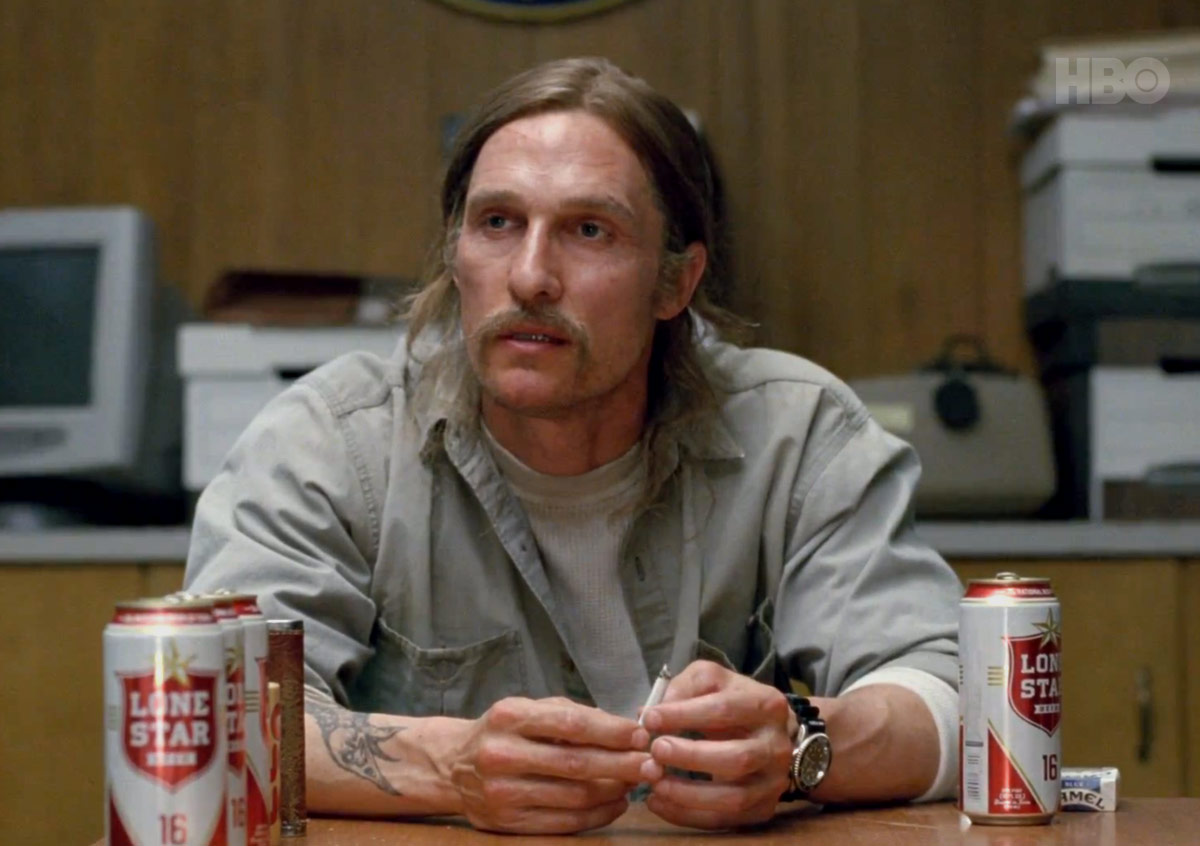It used to be the case that, when it was announced a beloved on screen actor had made the move to television, their career had all but ended. Moving from the big screen to the small screen not only reduced the validity of an actor’s career but also, apparently, its lifespan. Everything has changed, however. Once a black mark against the names of our most respected cinematic veterans, a move to television is now very much a la mode. It all started with Scandinavia. The good ol’ North. Bringing us bleak landscapes, incessantly raining locations and the most wooly of knitted jumpers, TV programmes from Denmark and Sweden started to alter the way in which we collectively perceived television. Using cinematic techniques on a small scale and removing the tinny realness so often associated with televisual productions, the Scandinavian shows were slick, effortless and just so cool.
It all started with The Killing. Originally set in Copenhagen, the series followed a new murder each series, crucially maintaining momentum and the interest of the viewer. However, the series presented its content in a way unlike those which came before. Unlike the tried and tested methods of series such as CSI and Britain’s Spooks, The Killing utilised a much more slow pace, often downplaying its content, grounding its characters more firmly in reality. The people on the TV show (none more so than the ever-enshrouded by wool, Sarah Lund) were those to whom we could directly relate, those who we could imagine fitting into our everyday lives. The victim of the first series was not portrayed as a martyr; she was flawed and imperfect and human. The powers in which we were supposed to trust were subject to the day to day anxieties which pepper the lives of those around us. Nobody was presented as being something other than they would have been in reality. And we lapped it up.
Of course, the show had to have a little more than that in order to enjoy international acclaim. Balancing the blacks of a David Fincher film with the dull bleakness of a Coen brothers production, the series made consistent nods to cinematic models of production. The landscapes of Denmark were captured as if for the big screen, the colours were saturated and intensified beyond their real life counterparts, the whole look of the series was elevated beyond what we are used to seeing. The film captured the smallness of the everyday within the grandeur of the cinematic. There was just enough of each to tickle our fancy and, as an audience, we became hooked.
Since the success of The Killing, there has been no looking back. Following the inevitable adaptations in the English language, a whole slew of new, slick TV series were announced with a barrage of our favourite cinematic figures attaching their name to them.
Whilst The Killing opened up cinematic licence to the small screen, television series since have taken further advantage of techniques commonly applied to film. Hannibal is arguably darker and more twisted than its cinematic counterparts, openly blending visions of stylised gore with twisted, loopy dream sequences. The success of the show lay in its ability to create feelings of extended uneasiness within the viewer, possible only because it had a much longer running time than its cinematic equivalent. Building doom and dread in subtle shifts each week, the series built tension like layers of paint, slowly and almost imperceptibly changing before the viewer. We only noticed the stark change when it is too late.
Most recently, we have been a world obsessed by the often incoherent, incessantly parodied ramblings of Matthew McConaughey’s Rust Cohle. The basis of True Detective was grounded very much in the televisually familiar; an apparently solved murder case is opened up yet again in light of further evidence. However, it is not the narrative arc of the series which gripped us so furiously as viewers. Much like Hannibal, there was an almost imperceptible sense of dread which built throughout the series, never entirely making itself manifest. We believed that there was truth in the words of Rust Cohle, without completely understanding why. Its tagline “man is the cruelest animal” seemed instantly to refer to the show’s unknown killer. But was this truly the case? Cohle’s overwhelming nihilism throughout the series seemed to suggest that, in fact, the phrase could and does, in fact, apply to everyone. Following his oft-repeated “time is a flat circle” declaration, he went on to bleakly mumble how “everything we’ve ever done, or will do, we’re gonna do over and over again”. Uplifting stuff. Packed within a film, the words of Cohle may have gone unnoticed but within the TV series, they can build and manifest and linger in the minds of the viewers. True Detective was arguably one of the most intelligent series to have been made yet, unabashedly introducing its viewers to philosophy, physics and human nature.
It seems that, where cinema has gone before, TV series will continue to go. Following his stark announcement that he would be quitting the film industry a few years ago, veteran director Steven Soderbergh is the latest in a long line to turn his attention to television. The Knick follows the medical and sociological developments of the early 1900s, focusing on the happenings of the Knickerbocker hospital. Soderbergh’s cinematic background is arguably the key to the series’ success. Using stylised close ups and a score by composer of the moment, Cliff Martinez, the series feels like cinema’s cooler younger sibling. And perhaps this was what television was always supposed to be. Shunned to be a knockoff of bigger productions, TV never quite found its niche before recent years. Now, however, it has finally found its groove. Using the format and visual landscape of cinema and stretching it across a longer timeframe, TV is hooking viewers all over the world. And soon, perhaps, we will be wondering why cinema doesn’t take a few pointers from television.

